Heat Conduction in Porous Media Characterized by Fractal Geometry
Abstract
:1. Introduction
2. Fractal Characterization of Porous Media
- (i)
- The values of function fH,1(x) at the four corner points are generated from a Gaussian distribution N(0, σ02), where σ02 is the variance (see Figure 1b).
- (ii)
- The value of function fH,2(x) at the center of the square (here, 2) is obtained by linearly interpolating between the four corner values and adding a random number df1 from N(0, σ12), where the quantity σ12 satisfies the relation (see Figure 1c),
- (iii)
- The values of function fH,3(x) at the midpoints of each side (here, 3) are obtained by linearly interpolating between two adjacent corner values and adding a random number df2 from N(0, σ22), where σ22 satisfies the relation (see Figure 1d),
- (iv)
- After the first run of the routine, nine sub-squares are obtained, which is characterized by the values of function fH,j(x) (see Figure 1d). The same procedures are repeated for each sub-square until the nth level. The corresponding variance of space displacement at each level will scale with a factor of . Therefore, we will have a 2D lattice array with a total of (2n + 1) × (2n + 1) points. In order to obtain the given porosity, we should also rescale the values of function fH,j(x) by the use of Kikkinides et al.’s method [36].
3. Heat Transfer in Porous Media
3.1. Theoretical Model
3.2. Numerical Simulation
3.3. Case Verification
4. Results and Discussion
4.1. Heat Conduction Behavior
4.2. Effective Thermal Conductivity
4.2.1. Effect of Porosity
4.2.2. Effect of Fractal Dimension
4.2.3. Effect of the Ratio of Thermal Conductivity between Solid Matrix and Fluid Phase
5. Conclusions
- (1)
- For the heat conduction process, the temperature field inside porous material is perturbed by the pore distribution. Owing to the uneven distribution of pores, the isotherms inside the porous material are no longer uniform, and temperature distribution is irregular along the heat flow direction. Interestingly, the peak heat flux through the solid matrix is more likely to appear in the narrow gaps between large pores.
- (2)
- An increase in porosity leads to a smaller effective thermal conductivity. Even when porosity remains constant, effective thermal conductivity is also affected by the fractal dimension. Increases in fractal dimension lead to a weaker pore structure correlation, which introduces greater thermal resistance across the fractal porous material and hence results in an increase of the temperature gradient. Therefore, the capability of heat conduction is weaker for porous material with a larger fractal dimension.
- (3)
- The ratio of thermal conductivity of the solid matrix to the fluid phase (ks/kf) is another important parameter in determining heat conduction. The heat conduction of the fluid phase in pores is effective in porous material only if ks/kf < 50; otherwise, the effective thermal conductivity of a given pore structure is mainly dependent on the thermal conductivity of the solid matrix.
Acknowledgments
Author Contributions
Conflicts of Interest
Nomenclature
| dT | topological dimension | T | temperature |
| D | fractal dimension | t | time |
| fH(x) | function | x, y | x, y-directions |
| H | Hurst coefficient | Z(x) | phase function |
| keff | effective thermal conductivity | Greek Symbols | |
| kf | fluid phase thermal conductivity | ε | porosity |
| ks | solid matrix thermal conductivity | σ2 | variance |
| k(x, y) | local thermal conductivity | Subscripts | |
| L | length | f | fluid phase |
| Np | individual cells | s | solid matrix |
| n | level number | Abbreviations | |
| q | heat flux | FBM | fractal Brownian motion |
| R(u) | autocorrelation function | ||
References
- Sayan, A.; Jaroniec, M. Nanoporous Materials IV; Elsevier: New York, NY, USA, 2005. [Google Scholar]
- Ingham, D.B.; Pop, I. Transport Phenomena in Porous Media III; Elsevier: Oxford, UK, 2005. [Google Scholar]
- Xie, T.; He, Y.L.; Hu, Z.J. Theoretical study on thermal conductivities of silica aerogel composite insulating material. Int. J. Heat Mass Transf. 2013, 58, 540–552. [Google Scholar] [CrossRef]
- Neuberger, P.; Adamovsky, R.; Sed’ova, M. Temperatures and heat flows in a soil enclosing a slinky horizontal heat exchanger. Energies 2014, 7, 972–987. [Google Scholar] [CrossRef]
- Nam, Y.J.; Gao, X.Y.; Yoon, S.H.; Lee, K.H. Study on the performance of a ground source heat pump system assisted by solar thermal storage. Energies 2015, 8, 13378–13394. [Google Scholar] [CrossRef]
- Liang, X.G.; Qu, W. Effective thermal conductivity of gas-solid composite materials and the temperature difference effect at high temperature. Int. J. Heat Mass Transf. 1999, 42, 1885–1893. [Google Scholar] [CrossRef]
- Behrang, A.; Taheri, S.; Kantzas, A. A hybrid approach on predicting the effective thermal conductivity of porous and nanoporous media. Int. J. Heat Mass Transf. 2016, 98, 52–59. [Google Scholar] [CrossRef]
- Hsu, C.T.; Cheng, P.; Wong, K.W. Modified zehner-schlunder models for stagnant thermal conductivity of porous media. Int. J. Heat Mass Transf. 1994, 37, 2751–2759. [Google Scholar] [CrossRef]
- Chen, Z.Q.; Cheng, P.; Hsu, C.T. A theoretical and experimental study on stagnant thermal conductivity of bi-dispersed porous media. Int. Commun. Heat Mass 2000, 27, 601–610. [Google Scholar] [CrossRef]
- Wang, M.R.; Wang, J.K.; Pan, N.; Chen, S.Y. Mesoscopic predictions of the effective thermal conductivity for microscale random porous media. Phys. Rev. E 2007, 75, 036702. [Google Scholar] [CrossRef] [PubMed]
- Chueh, C.C.; Bertei, A.; Pharoah, J.G.; Nicolella, C. Effective conductivity in random porous media with convex and non-convex porosity. Int. J. Heat Mass Transf. 2014, 71, 183–188. [Google Scholar] [CrossRef]
- Fedorov, A.G.; Viskanta, R. Three-dimensional conjugate heat transfer in the microchannel heat sink for electronic packaging. Int. J. Heat Mass Transf. 2000, 43, 399–415. [Google Scholar] [CrossRef]
- Horvat, A.; Catton, I. Numerical technique for modeling conjugate heat transfer in an electronic device heat sink. Int. J. Heat Mass Transf. 2003, 46, 2155–2168. [Google Scholar] [CrossRef]
- De Schampheleire, S.; De Jaeger, P.; De Kerpel, K.; Ameel, B.; Huisseune, H.; De Paepe, M. How to study thermal applications of open-cell metal foam: Experiments and computational fluid dynamics. Materials 2016, 9, 94. [Google Scholar] [CrossRef] [PubMed] [Green Version]
- Hussain, S.; Aziz, A.; Aziz, T.; Khalique, C.M. Slip flow and heat transfer of nanofluids over a porous plate embedded in a porous medium with temperature dependent viscosity and thermal conductivity. Appl. Sci. 2016, 6, 376. [Google Scholar] [CrossRef]
- Amhalhel, G.; Furmański, P. Problems of modeling flow and heat transfer in porous media. J. Power Technol. 1997, 85, 55–88. [Google Scholar]
- Vafai, K. Handbook of Porous Media; Taylor & Francis: Boca Raton, FL, USA, 2005. [Google Scholar]
- Alazmi, B.; Vafai, K. Analysis of variable porosity, thermal dispersion and local thermal non-equilibrium effects on free surface flows through porous media. J. Heat Transf. 2004, 126, 389–399. [Google Scholar] [CrossRef]
- Tacher, L.; Perrochet, P.; Parriaux, A. Generation of granular media. Transp. Porous Med. 1997, 26, 99–107. [Google Scholar] [CrossRef]
- Pilotti, M. Generation of realistic porous media by grains sedimentation. Transp. Porous Med. 1998, 33, 257–278. [Google Scholar] [CrossRef]
- Sitakanta, M. Effect of multiphase fluid saturation on the thermal conductivity of geologic media. J. Phys. D Appl. Phys. 1997, 30, L80–L84. [Google Scholar]
- Wang, M.R.; Pan, N.; Wang, J.K.; Chen, S.Y. Mesoscopic simulations of phase distribution effects on the effective thermal conductivity of microgranular porous media. J. Colloid Interface Sci. 2007, 311, 562–570. [Google Scholar] [CrossRef] [PubMed]
- Mandelbrot, B.B. The Fractal Geometry of Nature; W.H. Freeman: San Francisco, CA, USA, 1982. [Google Scholar]
- Rieu, M.; Sposito, G. Fractal fragmentation, soil porosity, and soil water properties. I. Theory. Soil Sci. Soc. Am. J. 1991, 55, 1231–1238. [Google Scholar] [CrossRef]
- Gimenez, D.; Perfect, E.; Rawls, W.J.; Pachepsky, Y. Fractal models for predicting soil hydraulic properties: A review. Eng. Geol. 1997, 48, 161–183. [Google Scholar] [CrossRef]
- Ma, Q.; Chen, Z.Q. Numerical study on gas diffusion in isotropic and anisotropic fractal porous media (gas diffusion in fractal porous media). Int. J. Heat Mass Transf. 2014, 79, 925–929. [Google Scholar] [CrossRef]
- Ma, Q.; Chen, Z.Q. Lattice Boltzmann simulation of multicomponent noncontinuum diffusion in fractal porous structures. Phys. Rev. E 2015, 92, 013025. [Google Scholar] [CrossRef] [PubMed]
- Feng, Y.J.; Yu, B.M.; Zou, M.Q.; Xu, P. A generalized model for the effective thermal conductivity of unsaturated porous media based on self-similarity. J. Porous Media 2007, 10, 551–567. [Google Scholar] [CrossRef]
- Xu, J.; Yu, B.M.; Zou, M.Q.; Xu, P. A new model for heat conduction of nanofluids based on fractal distributions of nanoparticles. J. Phys. D. Appl. Phys. 2006, 39, 4486–4490. [Google Scholar] [CrossRef]
- Yu, B.M.; Cheng, P. Fractal models for the effective thermal conductivity of bidispersed porous media. J. Thermophys. Heat Transf. 2002, 16, 22–29. [Google Scholar] [CrossRef]
- Pitchumani, R.; Yao, S.C. Correlation of thermal conductivities of unidirectional fibrous composites using local fractal techniques. J. Heat Transf. 1991, 113, 788–796. [Google Scholar] [CrossRef]
- Pitchumani, R. Evaluation of thermal conductivities of disordered composite media using a fractal model. J. Heat Transf. 1999, 121, 163–166. [Google Scholar] [CrossRef]
- Ramakrishnan, B.; Pitchumani, R. Fractal permeation characteristics of preforms used in liquid composite molding. Polym. Compos. 2000, 21, 281–296. [Google Scholar] [CrossRef]
- Pitchumani, R.; Ramakrishnan, B. A fractal geometry model for evaluating permeabilities of porous preforms used in liquid composite. Int. J. Heat Mass Transf. 1999, 42, 2219–2232. [Google Scholar] [CrossRef]
- Verma, A.; Pitchumani, R. Fractal description of microstructures and properties of dynamically evolving porous media. Int. Commun. Heat Mass 2017, 81, 51–55. [Google Scholar] [CrossRef]
- Kikkinides, E.S.; Burganos, V.N. Structural and flow properties of binary media generated by fractional brownian motion models. Phys. Rev. E 1999, 59, 7185–7194. [Google Scholar] [CrossRef]
- Kikkinides, E.S.; Burganos, V.N. Permeation properties of three-dimensional self-affine reconstructions of porous materials. Phys. Rev. E 2000, 62, 6906–6915. [Google Scholar] [CrossRef]
- Turk, C.; Carbone, A.; Chiaia, B.M. Fractal heterogeneous media. Phys. Rev. E 2010, 81, 026706. [Google Scholar] [CrossRef] [PubMed]
- Lu, S.L.; Molz, F.J.; Liu, H.H. An efficient, three-dimensional, anisotropic, fractional brownian motion and truncated fractional levy motion simulation algorithm based on successive random additions. Comput. Geosci. 2003, 29, 15–25. [Google Scholar] [CrossRef]
- Eucken, A. Allgemeine gesetzmäβigkeiten für das wärmeleitvermögen verschiedener stoffarten und aggregatzustände. Forschung Gabiete Ingenieur 1940, 11, 6–20. [Google Scholar] [CrossRef]

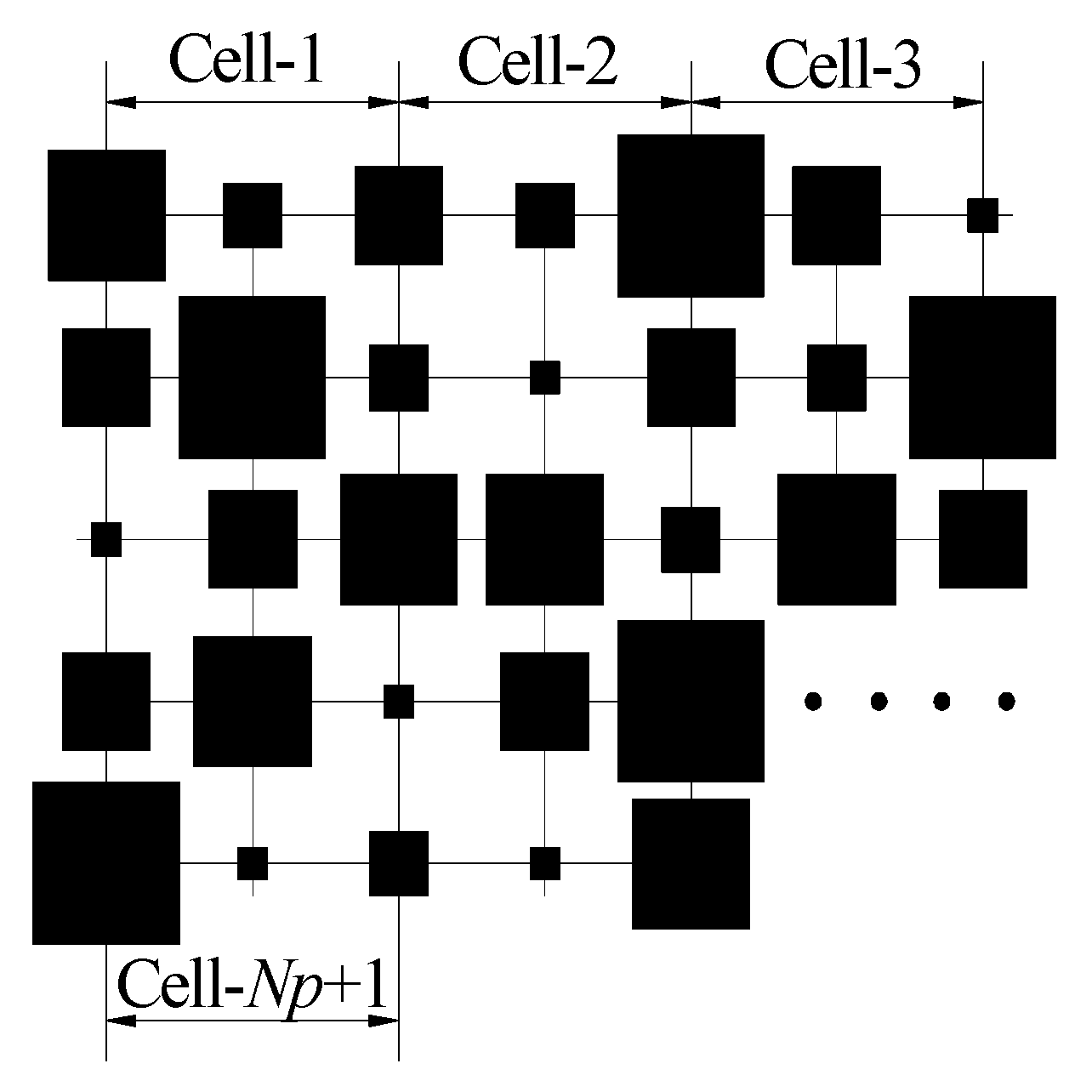
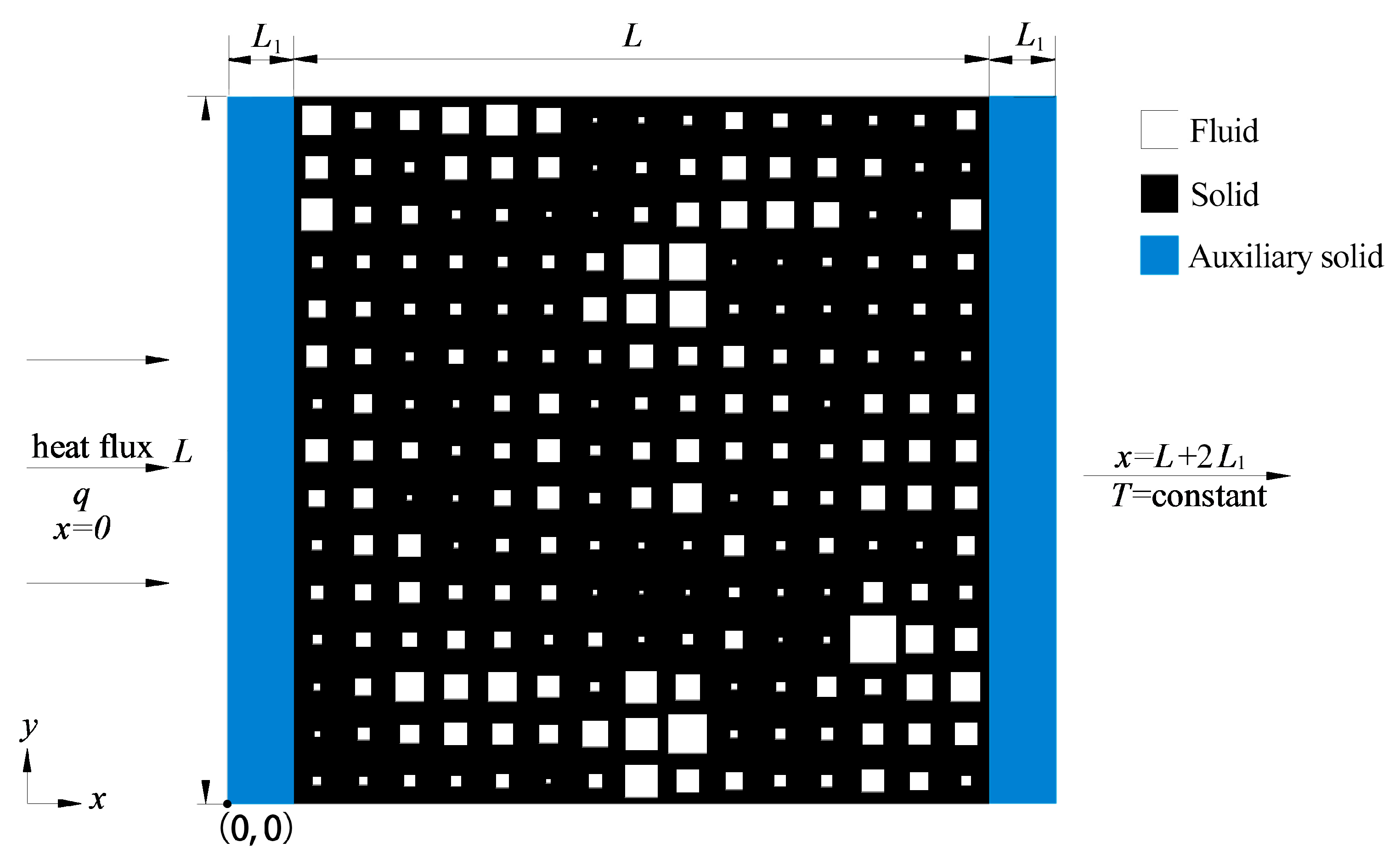
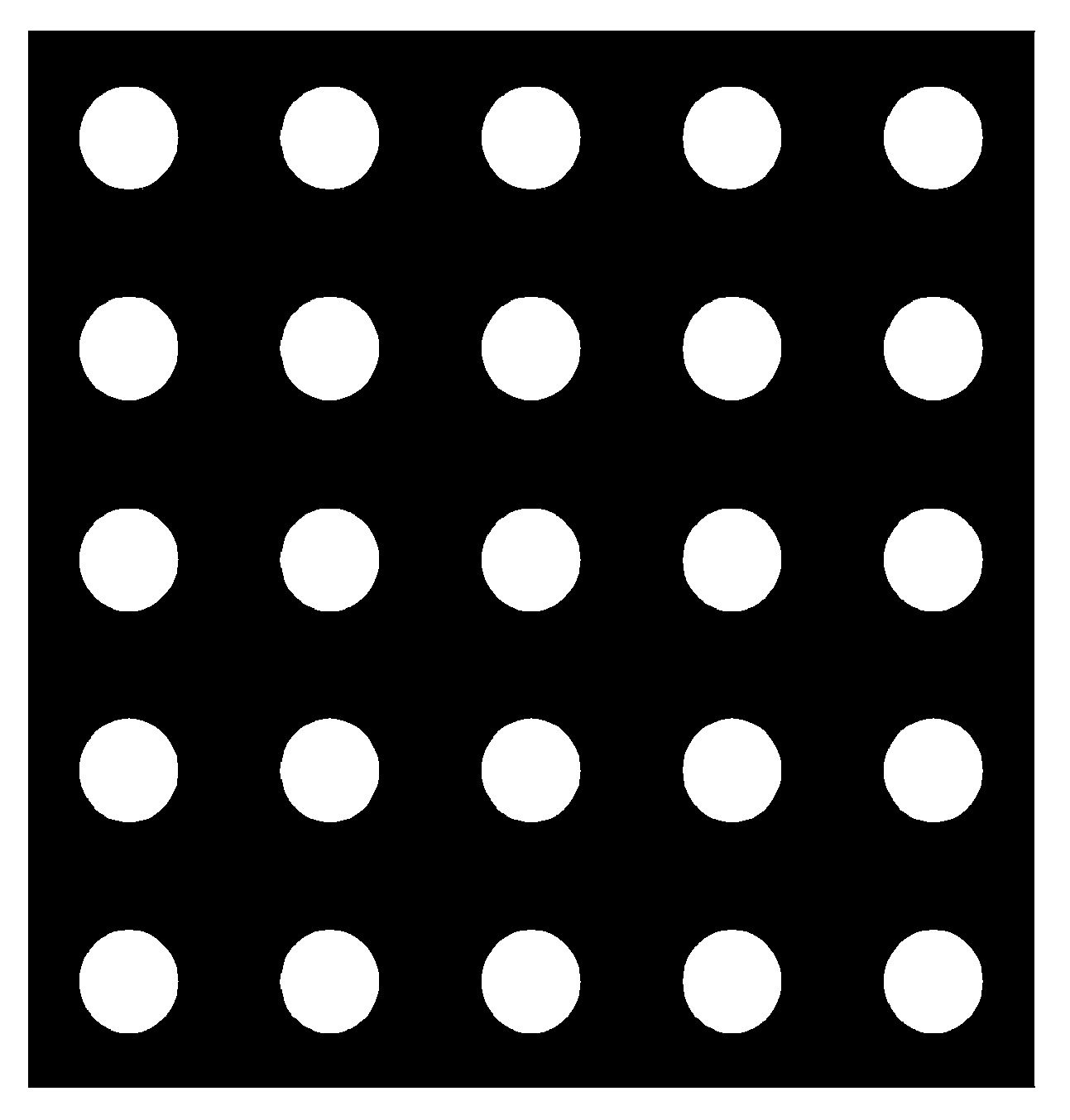
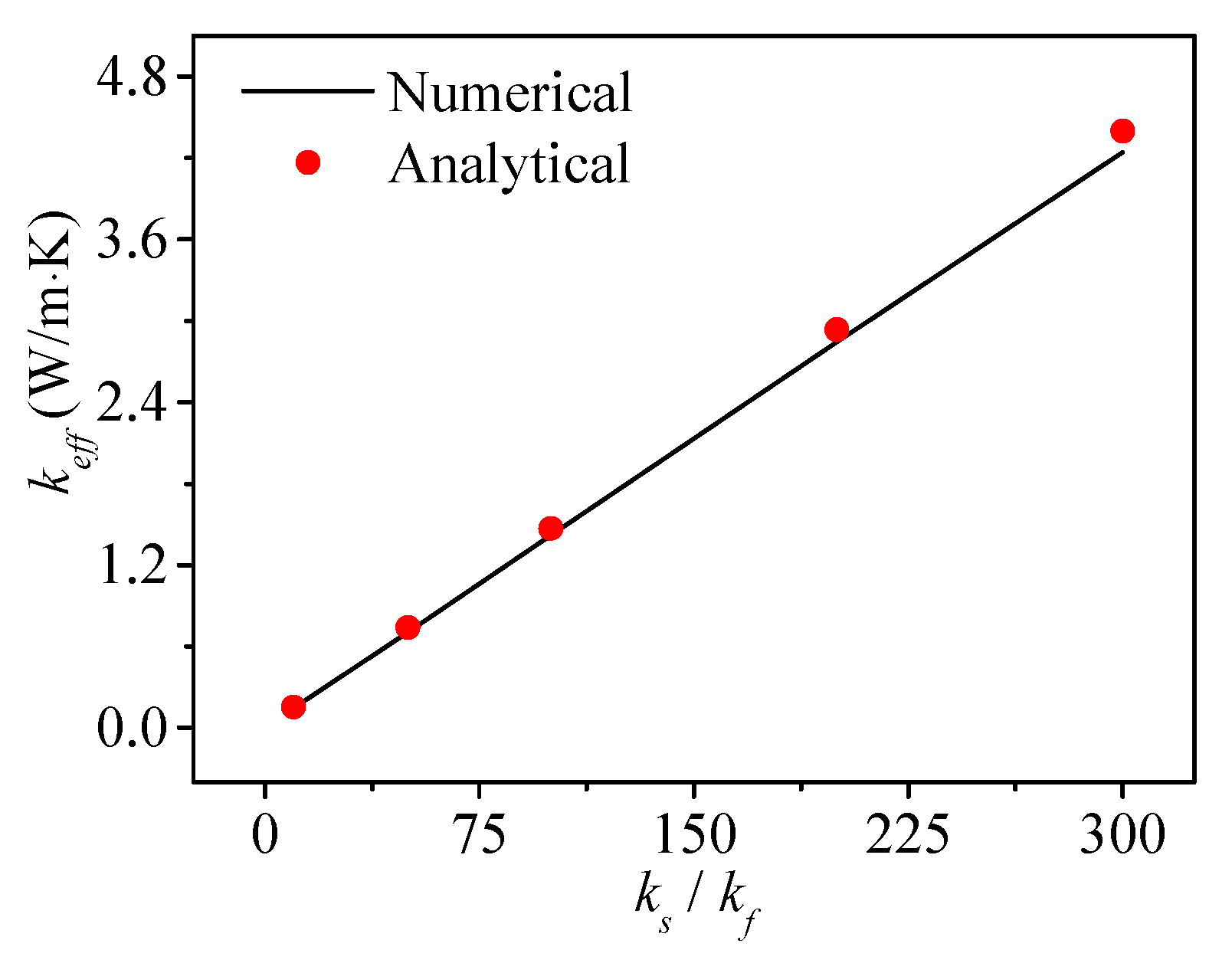
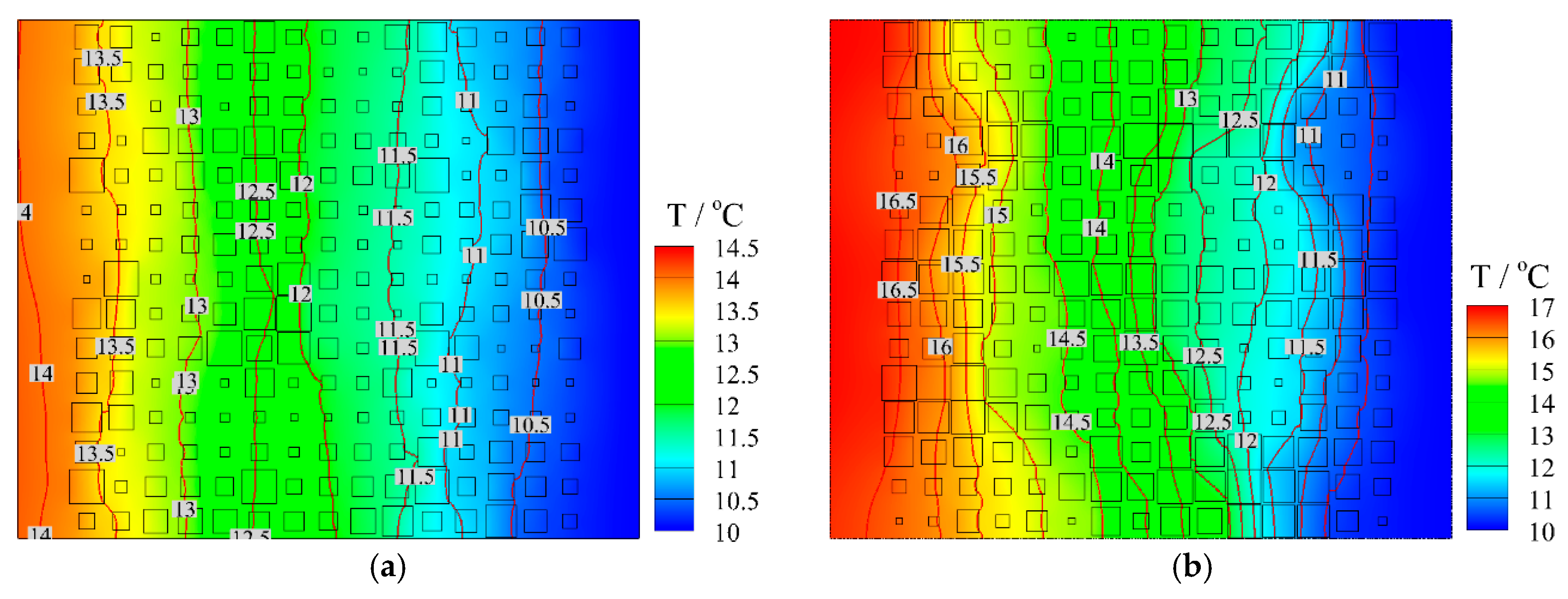
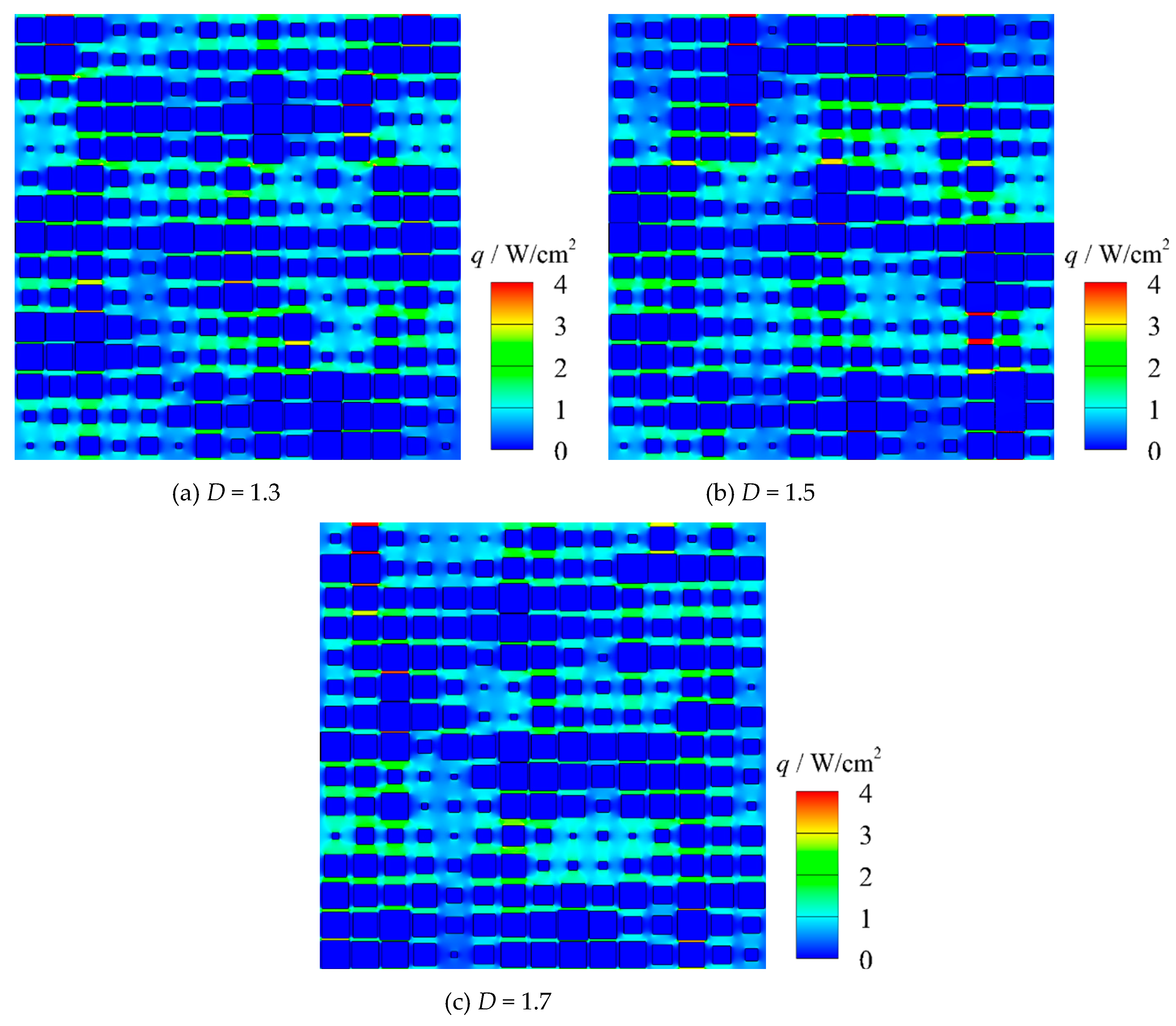
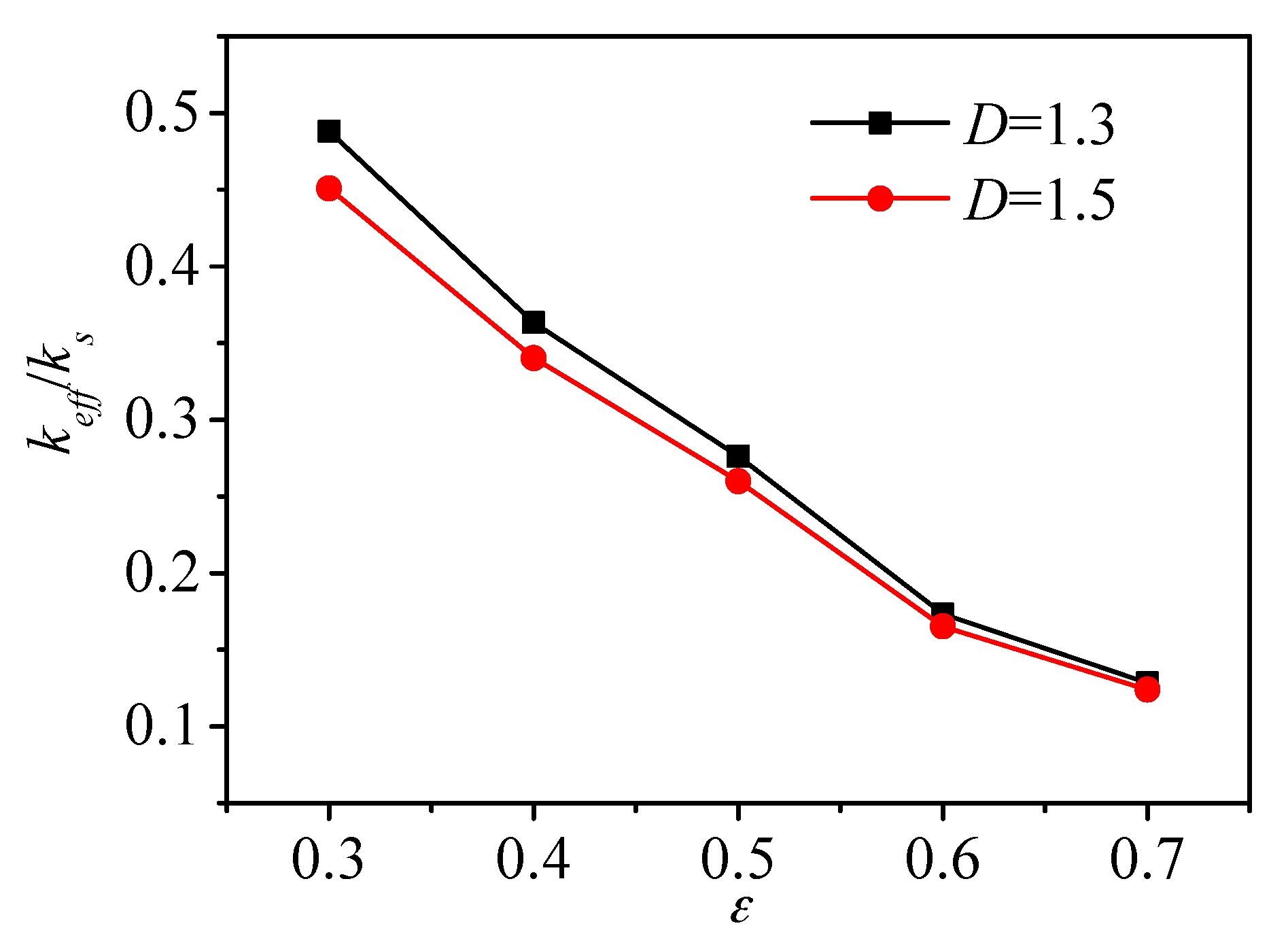
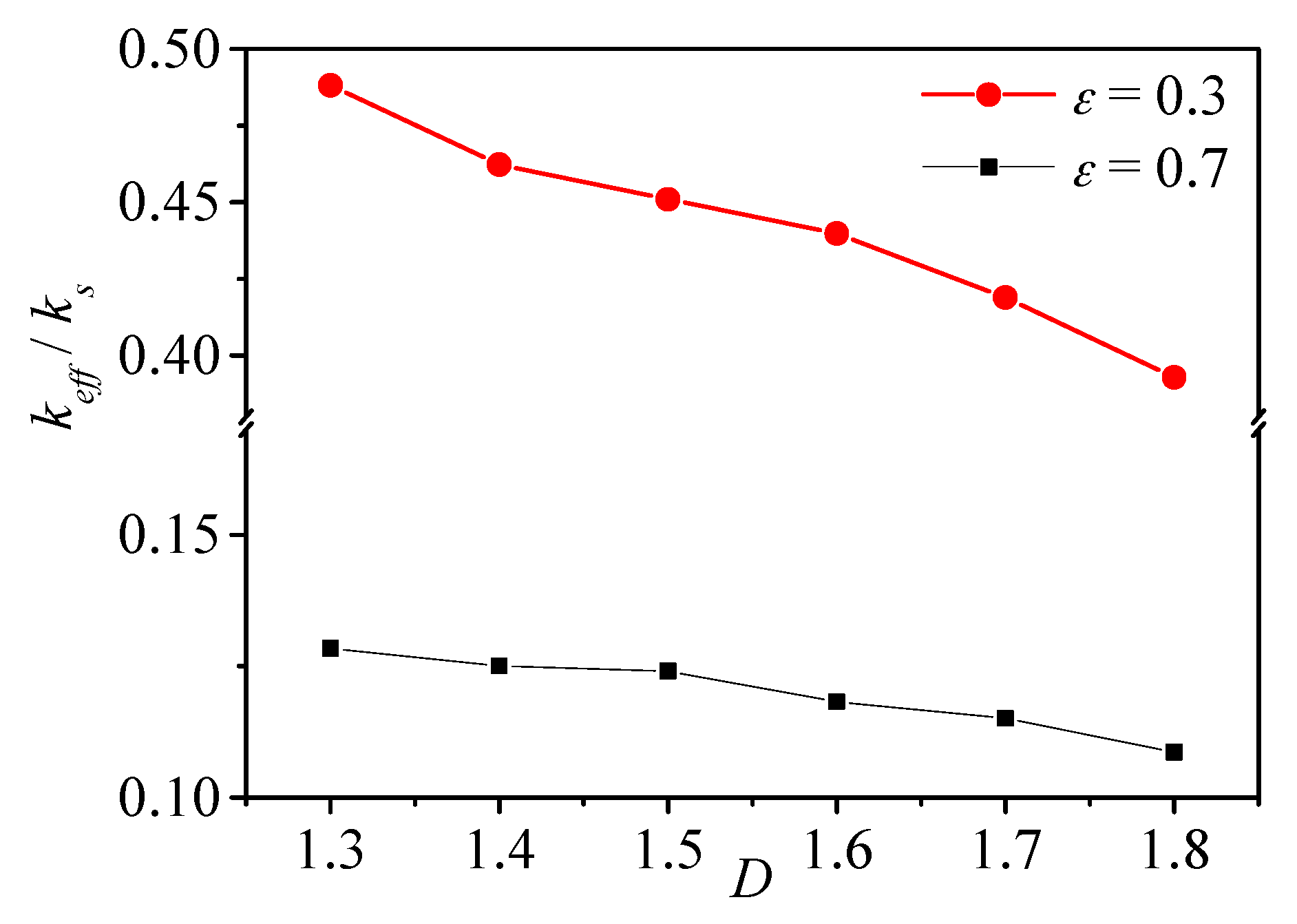

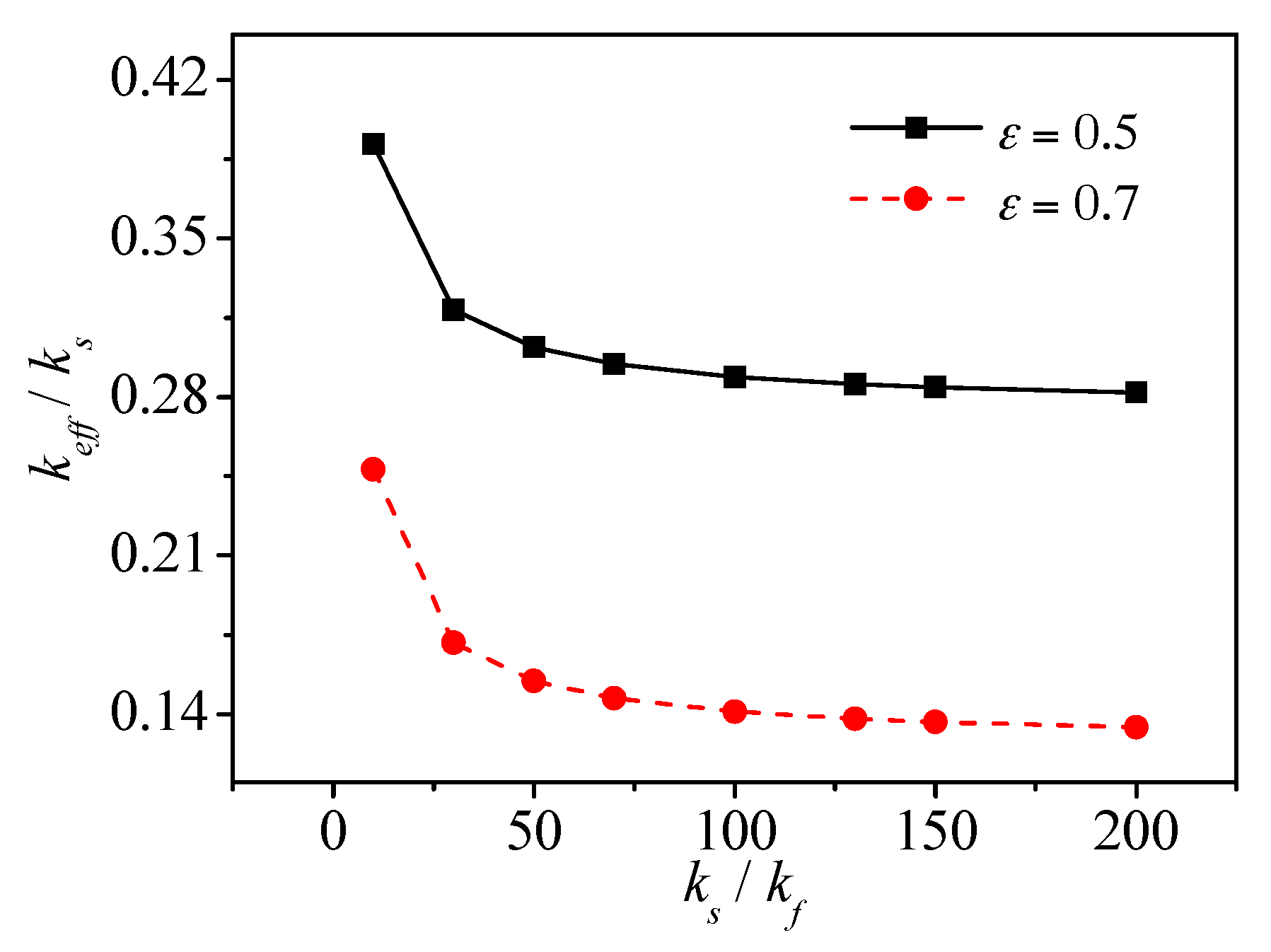
© 2017 by the authors. Licensee MDPI, Basel, Switzerland. This article is an open access article distributed under the terms and conditions of the Creative Commons Attribution (CC BY) license (http://creativecommons.org/licenses/by/4.0/).
Share and Cite
Deng, Z.; Liu, X.; Huang, Y.; Zhang, C.; Chen, Y. Heat Conduction in Porous Media Characterized by Fractal Geometry. Energies 2017, 10, 1230. https://doi.org/10.3390/en10081230
Deng Z, Liu X, Huang Y, Zhang C, Chen Y. Heat Conduction in Porous Media Characterized by Fractal Geometry. Energies. 2017; 10(8):1230. https://doi.org/10.3390/en10081230
Chicago/Turabian StyleDeng, Zilong, Xiangdong Liu, Yongping Huang, Chengbin Zhang, and Yongping Chen. 2017. "Heat Conduction in Porous Media Characterized by Fractal Geometry" Energies 10, no. 8: 1230. https://doi.org/10.3390/en10081230





